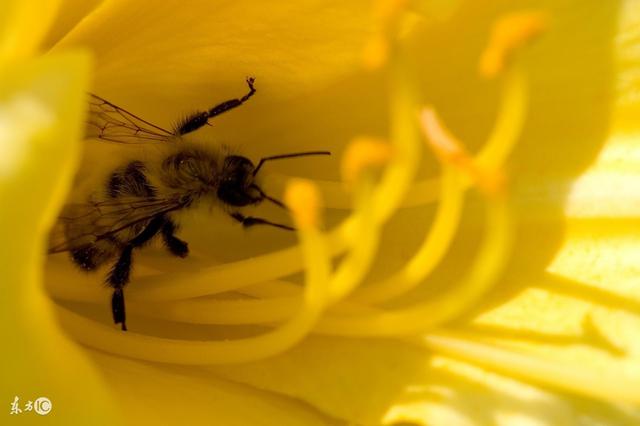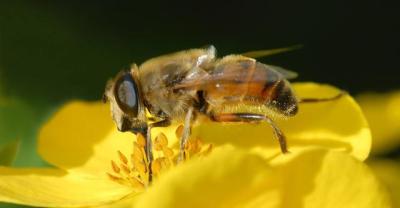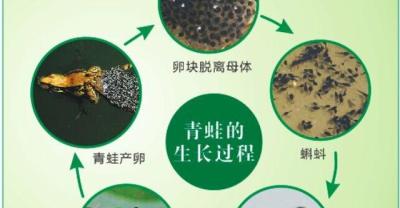Apiculture technology apiculture 50 noun explanation
1. Apiculture: the study and analysis of all kinds of honeybee insects, including honeybee biology, honeybee breeding, honey and powder botany, honeybee protection, honeybee machinery, bee product analysis and processing, and honeybee feeding management.
2. Apiculture: a production sector that uses honeybees to obtain bee products and pollinates crops to increase agricultural production.
3. Nectar plants: plants that can secrete nectar live pollen and can be collected and utilized by bees.

4. Powdery plants: plants that can produce pollen for bees to collect.
6. Nectar: nectar is the secretion of nectaries in flowers. during flowering, part of the organic matter stored in the plant is transported to the flower and transformed into syrup and stored in the nectaries under suitable temperature and humidity conditions. the syrup will be secreted outside the nectary through the epidermis of the nectary to form nectar.
7. Nectary: exocrine tissue on a plant that secretes nectar, usually consisting of one to several layers of secretory cells or specialized by epidermal cells, located on the base of the pistil, stamen, petal, calyx or receptacle of the flower.

8. Pollen: it is produced in the anther and is the male germ cell of the plant. The pollen develops from the plant sporogonia into microspores and then develops into a surface.
9. Main nectar plants: nectar plants with long flowering period, large quantity and large area, which can not only provide the breeding needs of bees, but also produce commercial honey.
10. The dance of bees: refers to the regular movement on the nest and spleen, the behavior of worker bees swinging their bodies in a certain way to express certain information.
11. Species of honeybees: there are many species of honeybees. Honeybees are actually natural or geographical species of honeybees, that is, the same kind of honeybees are distributed in different geographical areas due to geographical isolation. Subspecies formed by long-term natural selection.

12. Chinese honeybee: Chinese honeybee (Apis cerana), also known as Chinese bee, Chinese bee and soil bee, is a subspecies of oriental honeybee, which is unique to China. It is the main pollinating insect in forest community dominated by miscellaneous trees and traditional agriculture. It has the incomparable advantages of Italian bees, such as the use of sporadic honey plants, strong collecting power, high utilization rate, long honey collection period and adaptability, strong anti-mite and disease resistance, less feed consumption and so on. It is very suitable for fixed-point breeding in mountainous areas of China.
13. Italian bee: Italian bee is a species of western honeybee, referred to as Italian bee for short. Scientific name Apis mellifera Ligustica Spinola. Native to the Apennines Peninsula in Italy. The Mediterranean climate of origin and honey source conditions are characterized by short, warm and humid winters, hot and dry summers, and long flowering periods. Under similar natural conditions, Italian bees can show good economic characters, but have poor adaptability in places where winter is long and cold and cold wave often strikes in spring.
14. Honeybee biology: a science that specializes in the study of the life activities of honeybees, including the composition of bees, the morphology and physiology of bees, the behavior of honeybees and the ecology of honeybees.

Type III bees: bee colonies are usually composed of three types of honeybees of two genders, namely, queen bees, worker bees and drones.
16. Interior bees: young bees and young bees are mainly engaged in the work in the hive, which are called interior bees
17. Field bees: adult bees and senile bees are engaged in out-of-nest collection, which are called field bees.
18. Colony: a colony consisting of a queen bee, tens of thousands of worker bees and drones of varying numbers.

19. Honeybee colony potential: refers to the number of worker bees in a group of bees, which is a sign of colony fecundity and productivity, in frames.
The main factors affecting the colony potential are queen fecundity, colony feeding ability, worker bee viability and bee distribution performance.
21. Insemination: the process in which drones fix the saccular horn and the orifice of the penis in the orifice of the mating sac and vagina on the side of the queen bee and transfusion semen into the queen's vagina is called insemination.
23, test flight: 18-day-old worker bee test flight, worker head facing the beehive, flying around the beedoor, suddenly up and down, left and right for positioning.

25. Adolescence of drones: drones develop from unfertilized eggs. The food quality of drone larvae is similar to that of worker bees, but the number of drone larvae is 3-4 times higher than that of worker bees, so the larvae and adults of drones are larger than that of workers.
26. Spring decline: if the colony is too weak or lack of nutrition after overwintering, resulting in the death of a large number of overwintering bees, it will affect the development speed of the colony. This phenomenon is called "spring decline" in beekeeping.
27. Bee road: the bee road refers to the space in the beehive for bees to pass through and air circulation. In the hive, that is, the gap between the nest frame and the nest frame, and between the nest frame and other parts of the beehive.
28. Nest frame: the nest frame is composed of upper beam, lower beam and side strip, which is used to support, fix and protect the nest and spleen. Its shape, size and quantity play a decisive role in the design of the beehive.
29. Nest foundation: the foundation of an artificial honeybee nest house, which provides the basis for bees to build a spleen.
30. Natural division of bees: it refers to the phenomenon that bees are automatically divided into two or more groups when the honey source is abundant, the climate is suitable, and the group potential is strong.
31. Bee fever: if the colony begins to prepare for bee division, the worker bee will reduce the feeding of the queen bee, forcing the queen bee to reduce spawning. At the same time, the colony will also reduce the collection and spleen-making activities, leaving the whole colony in a state of idleness. This phenomenon is called "bee fever".
32. Partial set of bee colony: it refers to the phenomenon that some bees relatively concentrate into a certain colony because of recognizing the wrong hive.
33. Swarm flight: refers to the phenomenon that a whole swarm of bees leave the nest and fly away.
34. Mating colony: refers to the bee colony that specializes in providing the life of the queen. In order to provide more queen bee mating, the potential of the mating group is often very small, especially the special mating group.
35. The adjustment of the hive: the adjustment of the hive is to reasonably change the position of the nest and spleen within the colony, and its purpose is to reasonably control the queen bee to lay eggs, provide good conditions for the development of bees in the hive, and help to increase the yield of bee products.
36. Swarm theft: refers to the phenomenon that worker bees of some colonies enter other colonies to pick up honey or a swarm of bees that appear in the hive to snatch honey in another colony when the source of honey and powder is scarce.
37. Worker bees lay eggs: it refers to the phenomenon that a small number of worker bees lay eggs when there is no queen or when the queen is old.
38. The rearing of honeybees, also known as shifting bees, is a mode of beekeeping production commonly used by professional beekeepers, which transports bees to sites rich in honey and powder sources hundreds of kilometers away for beekeeping production.
39. Artificial breeding king: the worker bee larvae or fertilized eggs of less than 3 days old are transplanted into the platform of the king frame, and then the king frame is placed in the king group for worker bees to feed. Artificial breeding must be carried out in the season when the external climate is warm and the source of honey and powder is abundant.
40. Selective breeding of honeybees: according to the characteristics of heredity and variation of honeybees, through selection and reproduction, it constantly expands, accumulates and strengthens some beneficial variation caused by natural empty talk or genetic recombination in honeybee populations. and make this beneficial variation develop in the direction of the same variation.
41. Honeybee hybrid breeding: using hybridization technology, a new variant type of hybrid is obtained from two or more varieties through the combination of gametes of different genotypes, and the hybrid is selected and the characters are fixed by means of breeding. a new variety breeding in order to obtain a new variety type.
42. Huazi: after the honeybee larvae get sick, they are often cleared out of the nest by the interior bees, the disease-free larvae develop normally, and the queen bee lays eggs in the cleared empty room, resulting in different ages of development on the spleen of the same lid. this condition is called "Huazi".
43. Shake honey: turn the uncovered beehive in a specific device and separate the honey with the resulting centrifugal force.
44. Honey: a sweet substance that bees collect nectar and then fully brew and store in the nest and spleen.
45. Propolis: gum and resin collected by worker bees from the buds and trunks of some plants and mixed with maxillary gland secretions and beeswax.
46. Bee venom: the yellow transparent liquid secreted by worker bee venom glands and paratoxin glands tastes bitter and fragrant, stored in poison sacs and discharged by chelating needles when chelating.
47. Separate the honey: put the spleen in the separator and separate the honey from the spleen by centrifugation.
48. Nest honey: a honey spleen matured by bees and covered with wax.
49. Bee pollen: the male gametes collected by honeybees from pollen plants, and it is one of the main foods of honeybees. The protein and amino acid nutrition needed for honeybee production and development are provided by pollen.
50. Royal jelly: a milky white or yellowish, slightly sweet and sour jelly substance secreted by the royal jelly gland of the bee head. It is a kind of food used by worker bees to feed bee larvae and queen bees, also known as bee milk.
Non-communicable diseases and poisoning of honeybees
Hybrid cultivation of queen bee in Chinese bee culture technology
The biological characteristics of bee heads leading different groups of bees.
Detailed description of Beekeeping techniques (Ⅱ)
- Prev

Cow farming: these measures keep cows safe through the winter!
During this period of time to communicate with farmers, many farmers in the farm to prepare for the safety of dairy cows in the winter. Today, let's have a chat with you: the cow is safe.
- Next

Matters needing attention in the Culture of Phalaenopsis, the Queen of Jiao Yanlan
In general, orchids appear in light and elegant colors, but not many orchids appear in bright dark pink like Phalaenopsis. Phalaenopsis, known as the queen of orchids,
Related
- On the eggshell is a badge full of pride. British Poultry Egg Market and Consumer observation
- British study: 72% of Britons are willing to buy native eggs raised by insects
- Guidelines for friendly egg production revised the increase of space in chicken sheds can not be forced to change feathers and lay eggs.
- Risk of delay in customs clearance Australia suspends lobster exports to China
- Pig semen-the Vector of virus Transmission (4)
- Pig semen-the Vector of virus Transmission (3)
- Five common causes of difficult control of classical swine fever in clinic and their countermeasures
- Foot-and-mouth disease is the most effective way to prevent it!
- PED is the number one killer of piglets and has to be guarded against in autumn and winter.
- What is "yellow fat pig"? Have you ever heard the pig collector talk about "yellow fat pig"?

